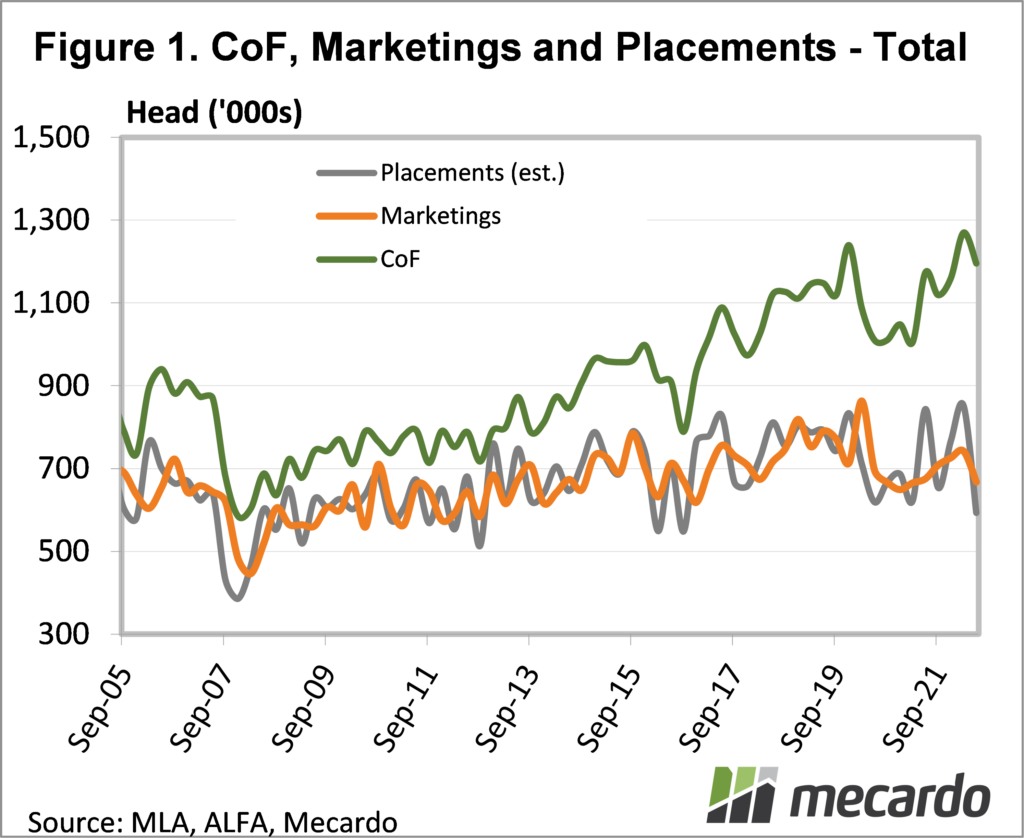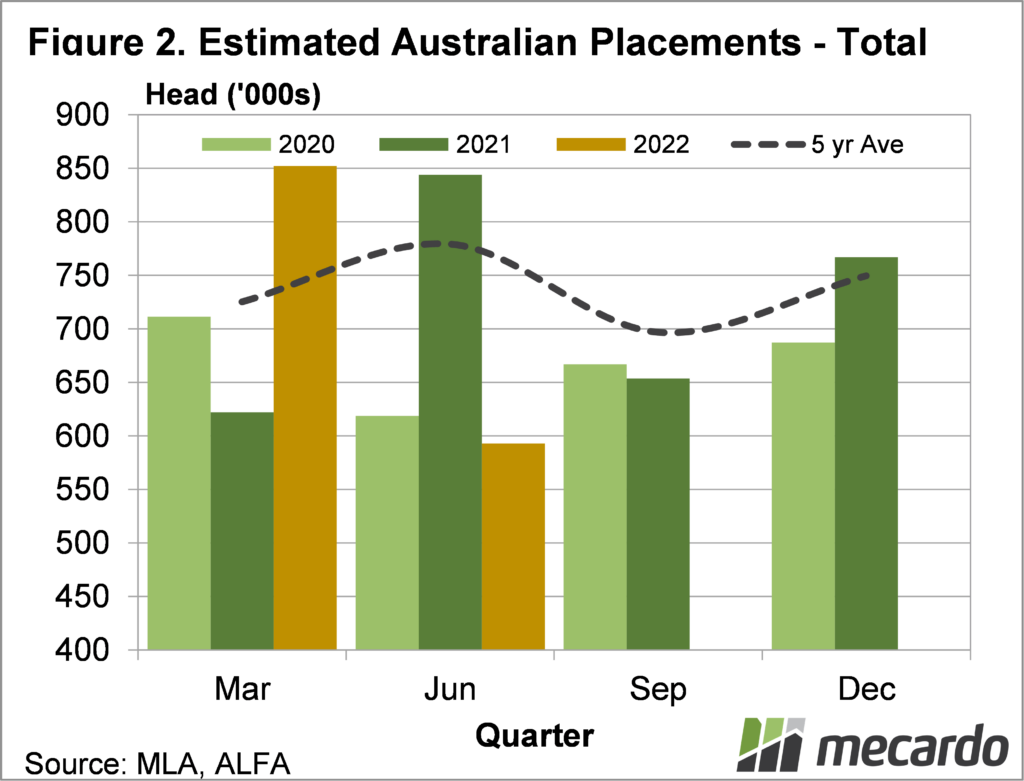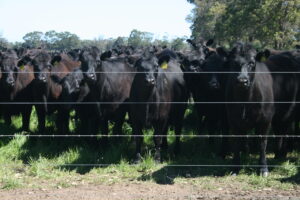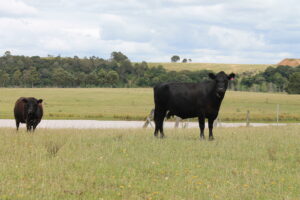The quarterly cattle on feed survey is complete, and the numbers for June are out. There were some external factors which look like they made lotfeeders defy the usual trend, to post a decline in the mid year number of cattle on feed.
The headline number of cattle on feed is still very strong. The end of June saw 1,195,466 head of cattle on feed, the third highest number on record. Figure 1 shows however, that in month on month terms, cattle on feed is down 6%. The increase on June 2021 was 2%, but this masked the diversion from the traditional trend.
Historically cattle on feed numbers rise 5% in the second quarter. The increase usually comes as lotfeeders prepare to turnoff more cattle during the traditional low grassfed supply season.
Queensland is the largest feedlot state, and they drove the fall in cattle on feed numbers, losing 5.4% in the June quarter. It was the smaller feedlot states of WA and SA which had the big declines however, down 25% and 21% respectively. WA lotfeeders still had 43% more cattle on feed than June 21, such is the growth of the sector in the west.
For numbers of cattle on feed to fall, marketings need to be higher than placements. Figure 1 shows that we definitely saw this in the June quarter. Marketings of cattle out of feedlots was down 10%, but largely steady on June 21 despite the large numbers going on feed in the first quarter.
It is placements of cattle on feed which were most interesting. Placements fell heavily in the June quarter, down 30% against that measure and also relative to June 21 (figure 2). Placements hit their lowest level since 2016.
The end of June came before the concerns around Foot and Mouth disease really ramped up, so it’s hard to blame that for the decline in placements.
It wasn’t tight supply of feeder cattle which caused the fall in placements, as prices remained relatively steady. Tight supply of feeders would usually see those prices rally.
We need to go back to April, the start of the quarter, and it was at that stage that grain prices were peaking following the war in Ukraine. Other input costs have also been rising, and labour is hard to find. Tighter margins in the June quarter are likely the driver behind lower numbers.
What does it mean?
Slowly rising grain prices rarely see cattle on feed numbers collapse. Price spikes however, can quickly see lotfeeders pull back on buying until the uncertainty wanes. In July and August the uncertainty continued, and there were still lots of cattle on feed which seemingly hit the market, forcing prices lower. With grain prices easing in recent months, and feedlots having plenty of space, we could see demand for feeder cattle strengthen in the last quarter.
Have any questions or comments?
Key Points
- Cattle on feed numbers fell in the June quarter, but were still historically very strong.
- Rising grain prices and uncertainty appear to have contributed to the counter-seasonal fall.
- Demand for feeders could increase with easing grain prices.
Click on figure to expand
Click on figure to expand
Data sources: MLA, Mecardo














